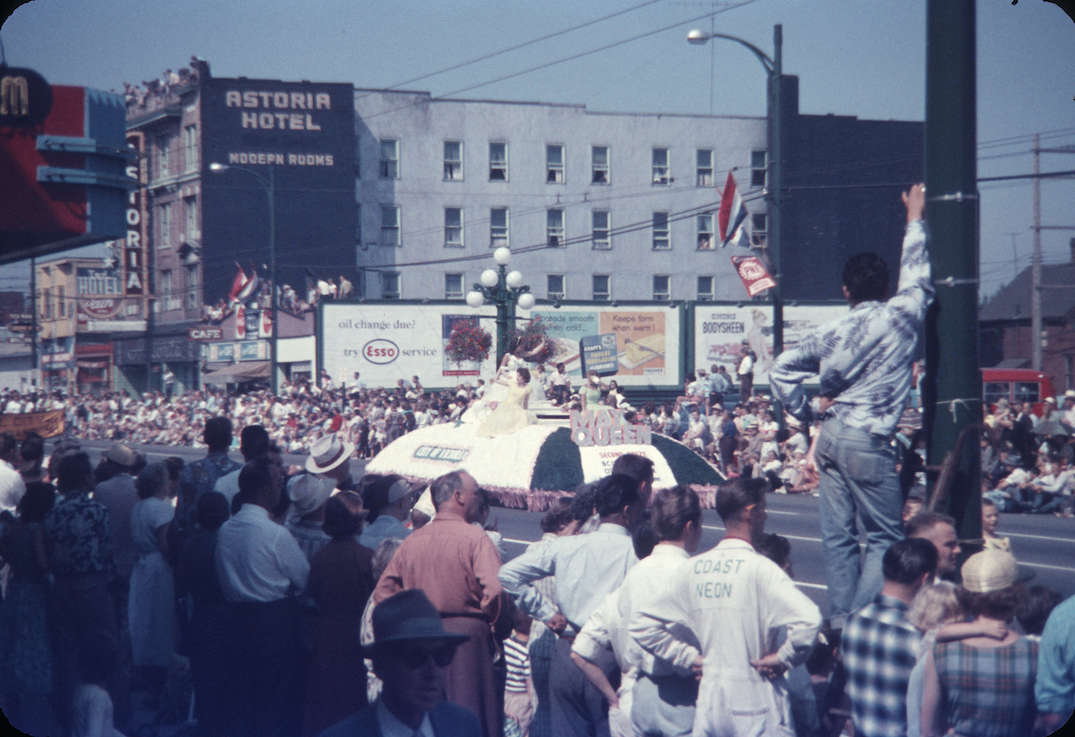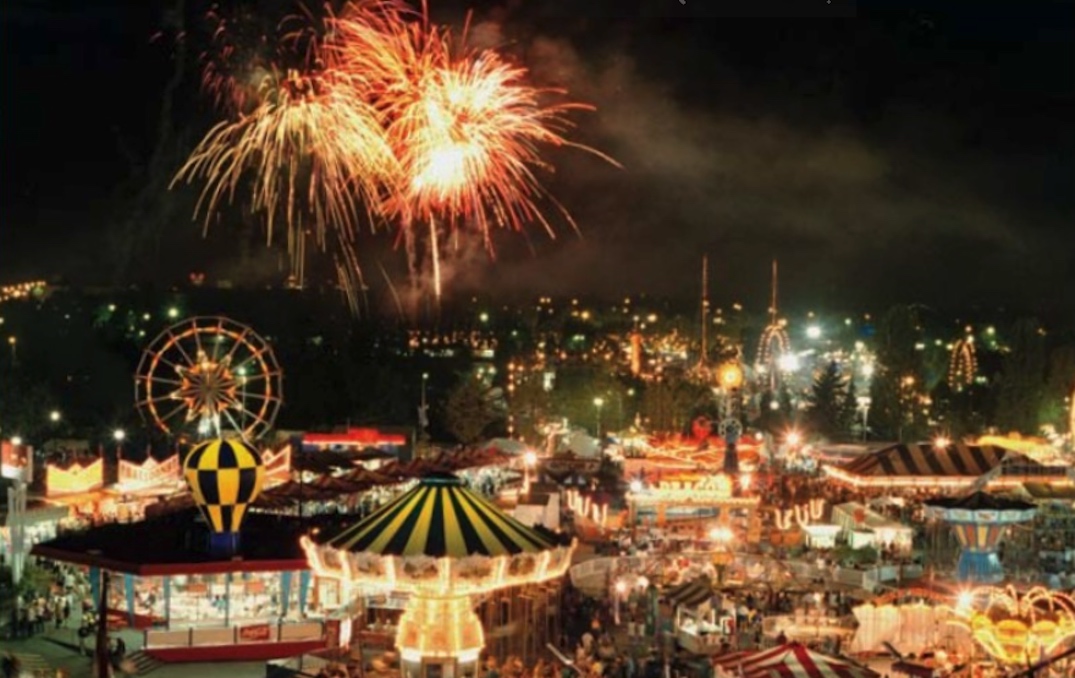Burns Bog nearly became a "Disney-like" theme park and film studio over 20 years ago

Imagine the alternate reality of a massive theme park, including a new home for the Pacific National Exhibition (PNE), and a film and television production studio located in the general large area wedged by Highway 99, Highway 17 (South Fraser Perimeter Road), and Highway 91 (Annacis Highway).
In such an alternate reality, much of this site in Delta was previously Burns Bog.
In 1999, there was a plan by the private owner of Burns Bog to develop nearly half of the peat bog into one of Metro Vancouver’s “integrated, themed retail-leisure-entertainment centre.”
- You might also like:
- PNE still committed to eventual Playland redevelopment into a theme park
- Playland ride named one of the world's best new roller coasters for 2024
- New PNE Amphitheatre budget grows to $104 million
- World-class surf park resort proposal for Squamish receives approval
- City of Delta buys property for new hotel project to revive Ladner waterfront
Delta Fraser Properties had proposed to develop 2,500 acres — an area equivalent to 2.5 times the size of Vancouver’s Stanley Park — into a theme park, a new PNE home, an amphitheatre, a film studio, retail and dining, hotel resorts, and possibly residential uses. The remaining 3,000 acres owned by the company would preserved as as a protected peat pog.
Critics at the time called it a “Disney-like development proposal.”
At the time, the BC NDP-led provincial government initially supported the proposal, as it was struggling to find a new home for the PNE.
For much of its history, the PNE was owned by the provincial government and operated as a Crown corporation, but its site of Hastings Park was on land owned by the City of Vancouver through a long-term lease, which was originally set to end in 1996. In 1990, Vancouver City Council approved a direction that ordered the PNE to vacate the site in 1996, and demolish the PNE’s fairground buildings and facilities for the conversion of the site into a “dominant park use with abundant green spaces and trees.”
The current comparatively limited size of the PNE, a fraction of the size of its heyday ending in the 1990s, can be sourced to City Council’s 1990 decision.
But due to the inability to find a suitable new site, the PNE’s lease was subsequently repeatedly renewed on a year-to-year basis by the City in the latter half of the 1990s, enabling the PNE to remain at Hastings Park over the short term until at least the early 2000s.

Burns Bog Ecological Conservancy Area. (Kevin Kungl/Shutterstock)

Burns Bog Ecological Conservancy Area. (Russ Heinl/Shutterstock)
After Delta Fraser Properties announced its Burns Bog development proposal in 1999, in response to a public outcry, the provincial government began to backtrack on their support for the project and requested the developer to perform an ecosystem analysis of the bog to determine how much of the bog needs to remain to preserve environmental integrity.
Later in 1999, in response to the development proposal, the City of Delta held a public referendum over the question of the municipal government formally asking the provincial government to acquire the entirety of Burns Bog through negotiations with the developer or expropriation. A solid majority of 75% voted “Yes” in the referendum.
The measure of putting the question of the bog’s future in a referendum followed a decade-long period when various major proposals to develop the area were floated and rejected — long before the theme park and entertainment hub proposal of the late 1990s.
In 1988, Western Delta Lands (WDL), the bog’s previous owner before Delta Fraser Properties, proposed building a $10 billion project of a deep sea port, industrial uses, and a new city-sized neighbourhood for 120,000 residents. This included creating a 40-foot deep, 600-acre water basin for the port.
WDL came back with a new proposal in 1990 to build a 2,500-acre industrial park, and another proposal in 1992 to build a one-mile thoroughbred racetrack on 350 acres of bog area.

Burns Bog Ecological Conservancy Area. (City of Delta)

Burns Bog Ecological Conservancy Area. (City of Delta)
The future of Burns Bog remained a key municipal issue for Delta through 2004, when the federal government, provincial government, municipal government, and Metro Vancouver Regional District reached a deal to acquire 5,046 acres of Burns Bog for its perpetual use as an environmental reserve — now formally designated as an “Ecological Conservancy Area.”
On March 24, 2024, the acquisition jointly made by all four governments will mark its 20th anniversary.
“I’m proud to celebrate the continued conservation of the largest raised bog on the west coast of the Americas, and the City of Delta’s leadership role in managing and restoring this valuable ecosystem,” said Delta Mayor George Harvie in a statement today ahead of the anniversary.
“In my prior role as Delta’s city manager, I spent many hours negotiating the purchase of the bog, and I remember vividly how meaningful Burns Bog was to our community and our entire region, and this support has increased tenfold since then.”

Burns Bog Ecological Conservancy Area. (City of Delta)

2016 fire of Burns Bog. (Government of BC)
Burns Bog is often referred to as the “lungs of Metro Vancouver” and one of the largest undeveloped urban wilderness areas in Canada, deemed to be not only a rare habitat for wildlife and plants but also a carbon sink.
An additional 800 acres of Burns Bog — comparable to the size of Stanley Park — was acquired in 2020 for preservation. Over the past two decades of being managed by the municipal government and regional district, about 500 dams have been built within the bog to raise its water table and reduce wildfire risks, and there is active work to manage invasive species.
But the bog continues to see risks, including wildfires, which was made apparent by the major 2016 fire that spanned almost 200 acres near the northwest corner of the protected area. There have also been some impacts from industrial developments bordering the bog, and the City of Vancouver’s landfill at the southwest corner of the bog.
Some of the most historical disruptions to the bog were peat bog mining activities that spanned between the 1930s and the early 1980s, including the extraction of peat during the Second World War for the magnesium needed for US factories to make bombs. Large areas of the bog with linear strand patterns in the landscape can be attributed to previous peat mining activity.

Burns Bog Ecological Conservancy Area. (City of Delta)

Burns Bog Ecological Conservancy Area. (Russ Heinl/Shutterstock)
As for the crossroads the PNE faced at the turn of the century, after the Burns Bog proposal was defeated, the provincial government went as far as to acquire a large industrial waterfront site in Surrey near the Pattullo Bridge for $19 million. This included space for new fairgrounds, an amphitheatre, an ice rink, and a hotel and casino. This Surrey property was acquired in 2001, but it was disposed of by the provincial government shortly after in 2002 when it had become apparent the PNE would remain at Hastings Park.
Public opinion surveys at the time showed nearly 87% of Vancouver residents did not want the PNE to relocate.
In 2004, the City of Vancouver assumed control of the PNE, with the provincial government dissolving the longtime Crown corporation, and transferring the entity to a new City-owned non-profit organization governed by a board of directors comprised largely of municipal representation.
Ever since, the PNE has been looking to rewind on some of the past decisions that led to the demolition of significant purpose-built event and programming space at Hastings Park, when there was an expectation that the PNE would relocate.
Between 1997 and 2001, the City of Vancouver demolished about 200,000 sq ft of indoor exhibition space — the BC Pavilion, Pure Foods Building, Showmart, and Poultry Building — to make way for the Sanctuary lake, Italian Gardens, and skatepark.
The PNE’s direct reach beyond Hastings Park also became smaller after the Crown Corporation held its final PNE Fair opening day parade in 1995. For over six decades, up until the mid-1990s, hundreds of thousands of people lined the massive parade route along East Hastings Street between downtown Vancouver and Hastings Park, making it one of the largest events in Metro Vancouver.

Playland in 1969, with the Wooden Coaster shown. (City of Vancouver Archives)

PNE Fair opening day parade on East Hastings Street, 1956. (City of Vancouver Archives)

Nightly fireworks during the Fair at the PNE in the 1990s. (PNE)
By 2026, in time for its potential use for Vancouver’s FIFA World Cup Fan Festival, the PNE will see the completion of a new world-class amphitheatre for concerts and events with 10,000 spectator seats under a landmark mass-timber roof. This is one of the big components of re-expanding and improving the purpose-built event and programming spaces on the fairgrounds under the City of Vancouver’s long-term Hastings Park/PNE master plan.
This summer, a new launch coaster will open at Playland, representing the start of the PNE’s multi-phased approach of expanding and redeveloping Playland into a theme park.
- You might also like:
- PNE still committed to eventual Playland redevelopment into a theme park
- Playland ride named one of the world's best new roller coasters for 2024
- New PNE Amphitheatre budget grows to $104 million
- World-class surf park resort proposal for Squamish receives approval
- City of Delta buys property for new hotel project to revive Ladner waterfront

